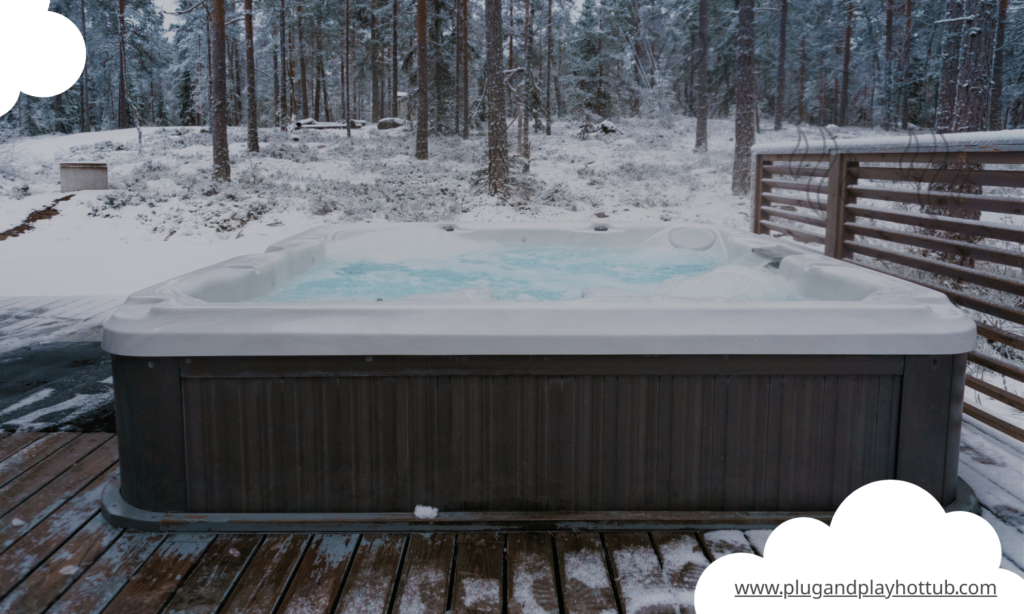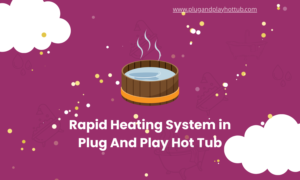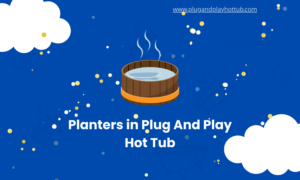
Plug and play hot tubs, also known as portable hot tubs, provide the relaxing benefits of a traditional built-in hot tub in a flexible, movable package. Their convenience and ease of setup come with some key considerations when evaluating their heating performance and temperature options.
As these tubs vary in size and features, it helps to understand typical heating capabilities and factors impacting temperature management. Focusing on insulation and efficient heating operations ensures the best experience.
What Temperature Ranges Are Typical?
The average temperature range for a portable plug-and-play hot tub is 80°F to 104°F (26°C to 40°C). Most models allow you to control the temperature in increments of 1°F to 2°F and will heat the water at a rate of 1°F to 2°F per hour. This allows you to customize the bath to your comfort level. Understanding the range and heat-up rate helps set realistic expectations for initial heat times and temperature options.
Higher-end models may reach maximum temperatures of up to 110°F (43°C). The average temperature kept by most users ranges from 98°F to 102°F (36°C to 39°C). This offers a relaxing hot bath without getting dangerously hot. Consider your personal preferences and safety when setting temperatures.
What Factors Impact the Temperature?
Several key factors determine whether your plug-and-play hot tub can effectively heat and maintain your desired temperature:
Insulation: The thickness and quality of the insulation surrounding the tub walls impact heat retention. Better insulation means less heat loss. Seek tubs with insulation rated R-19 or higher for better heat retention.
Mass: The total gallons held determine the thermal mass. The more water, the longer it takes to initially heat, but also the easier it is to maintain temperature. Balance the initial heat time with temperature stability.
Pump: A higher pump horsepower circulates water faster through the heating system, allowing for faster heat-up times. But it also consumes more energy. Seek lower power, except where fast reheating is needed.
Outside Conditions: Ambient temperatures, wind, shade coverage, and season all impact the tub’s heating performance. Colder conditions make it harder to heat. Position tubs out of the wind and weather when possible.
Number of Occupants: More people in the tub means more opportunity for heat loss each time the cover is opened. Plan for longer heat-up times after use for larger tubs.
How Quickly Can It Heat Up?
Most portable hot tubs take 12–24 hours to initially heat the full volume of water to the desired temperature. After the water is heated, the average time it takes to reheat the water after use is:
- 1-2 hours for 1 to 2-person tubs
- 2-4 hours for 3- to 4-person tubs
- 4–8 hours for 5- to 6-person tubs
Higher pump horsepower and better insulation reduce these heat-up times. Tubs marketed as “rapid heating” may heat at rates up to 1°F to 2°F per 10 minutes. But rapid heating often comes at the cost of higher energy use.
| Tub Size | Initial Heat Time | Reheat Time |
|---|---|---|
| 1-2 person | 12-24 hours | 1-2 hours |
| 3-4 person | 12-24 hours | 2-4 hours |
| 5-6 person | 12-24 hours | 4-8 hours |
What About Energy Efficiency?
Plug-and-play hot tubs use a large amount of energy to power the heating system and water jets. Most models draw between 15 and 20 amps. To put this in perspective, running your hot tub’s heater for 12 hours uses about the same energy as running a 1500-2000 watt space heater non-stop for an entire day.
Using an insulating cover, keeping temperatures moderate, and reducing filtering cycles can improve energy efficiency. Higher insulation also retains heat better after each use, reducing reheating needs. Prioritize energy-saving features to keep costs down.
Are Temperature Fluctuations Normal?
Small fluctuations of 1°F to 2°F above or below your set temperature are normal. Larger variances can indicate issues with:
- Poor insulation fails to retain heat
- Limited heater capacity, unable to keep pace in cold conditions
- Excessive filtering cycles cool the water
- Leaks allow heated water to escape and cooler water to seep in
Set your temperature expectations appropriately for your climate and tub size. Give your hot tub time after the initial start-up and between uses to stabilize back to your desired bath temperature. Monitor significant fluctuations, as they may signal problems needing service.
Key Takeaways on Heating Performance
- Adequate insulation is key for portable tubs to retain heat effectively. Seek at least an R-19 rating.
- More water capacity increases stable temperatures but requires longer initial heating.
- Powerful pumps speed heating but consume more energy. Balance performance with efficiency.
- Ambient conditions significantly impact heating times and the ability to maintain heat.
- Fluctuations of 1°F to 2°F are normal, but larger swings may indicate issues to troubleshoot.
Focus on insulation and minimizing heat loss between baths. Supplement with rapid reheating as needed to restore desired temperatures after use. Evaluate the heating time, temperature range, and key features against your needs and environment.



